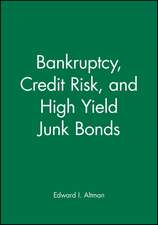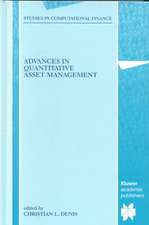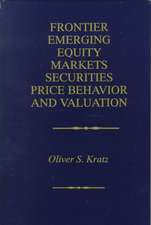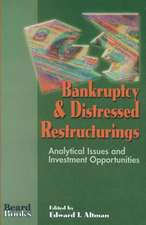The Fair Value of Insurance Business: The New York University Salomon Center Series on Financial Markets and Institutions, cartea 5
Editat de Irwin T. Vanderhoof, Edward I. Altmanen Limba Engleză Paperback – 25 oct 2012
- Solvency: if the fair values of assets and liabilities are out-of-step, then healthy companies may report negative net worth and insolvent companies may appear to be in sound financial condition.
- Reported Earnings: if the fair values of assets and liabilities are out of step, then reported earnings will not accurately represent the financial operations of the company.
- Risk Management: FASB recently postponed the implementation of its new rules on accounting for the use of derivatives instruments. However, if the final set of rules for figuring the fair value of derivatives is not carefully crafted, it may be possible that companies prudently hedging their risks are subject to penalties in their financial reports, while companies taking greater risks appear to have less volatile financial performance.
As the papers collected in The Fair Value of Insurance Business extend and update some of the issues treated in a previous Salomon Center conference volume, The Fair Value of Insurance Liabilities, this new volume may be viewed as a companion to the earlier book.
| Toate formatele și edițiile | Preț | Express |
|---|---|---|
| Paperback (1) | 946.55 lei 6-8 săpt. | |
| Springer Us – 25 oct 2012 | 946.55 lei 6-8 săpt. | |
| Hardback (1) | 950.84 lei 6-8 săpt. | |
| Springer Us – 30 sep 2000 | 950.84 lei 6-8 săpt. |
Preț: 946.55 lei
Preț vechi: 1154.34 lei
-18% Nou
Puncte Express: 1420
Preț estimativ în valută:
181.14€ • 196.70$ • 152.16£
181.14€ • 196.70$ • 152.16£
Carte tipărită la comandă
Livrare economică 22 aprilie-06 mai
Preluare comenzi: 021 569.72.76
Specificații
ISBN-13: 9781461370901
ISBN-10: 1461370906
Pagini: 340
Ilustrații: XII, 322 p.
Dimensiuni: 155 x 235 x 18 mm
Greutate: 0.48 kg
Ediția:Softcover reprint of the original 1st ed. 2000
Editura: Springer Us
Colecția Springer
Seria The New York University Salomon Center Series on Financial Markets and Institutions
Locul publicării:New York, NY, United States
ISBN-10: 1461370906
Pagini: 340
Ilustrații: XII, 322 p.
Dimensiuni: 155 x 235 x 18 mm
Greutate: 0.48 kg
Ediția:Softcover reprint of the original 1st ed. 2000
Editura: Springer Us
Colecția Springer
Seria The New York University Salomon Center Series on Financial Markets and Institutions
Locul publicării:New York, NY, United States
Public țintă
ResearchCuprins
I The Intellectual Underpinnings.- 1 Market Value of Insurance Liabilities and the Assumption of Perfect Markets in Valuation.- 2 The Valuation of Future Cash Flows: An Actuarial Issues Paper.- II Elaboration of Theory.- 3 Market Valuation of Liabilities: Transfer Pricing, Profit Release, and Credit Spread.- 4 Fair-Value Accounting for Financial Liabilities.- 5 Earnings, Historical-Cost Book Values, and Fair-Value Disclosures in the Valuation of Stock Life Insurance Companies.- III Illustrations of Fair-Value Calculations.- 6 Modeling Fair-Value Financial Reporting Results for the Single-Premium Deferred Annuity.- 7 Considerations for Ascertaining Term Insurance in a Fair-Value Con Context.- Contributors.





























